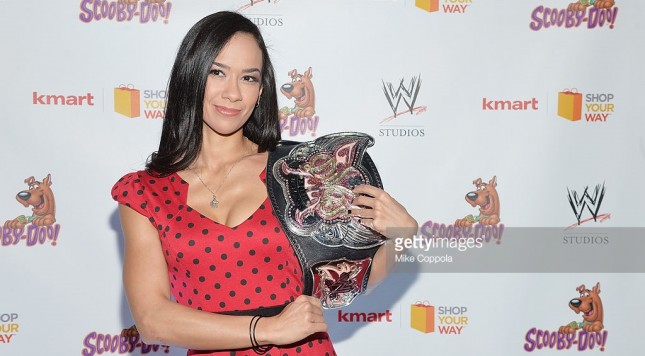The match between Charlotte and Sasha Banks on the March 5 edition of NXT was no different than any other encounter the two have had in the past year–save one element.
Just like their previous, recent encounters, Banks and Charlotte put on a contender for match of the night that showcased their respective in-ring acumen as well as their knack for storytelling.The sole difference is that this time, the duo were in the main event.
There aren’t two more worthy wrestlers of top billing anywhere in the United States, man or woman. And that’s an important distinction, as WWE finds itself on the precipice of a landmark angle with #GiveDivasAChance.
The Sasha Banks-Charlotte main event aired just a few short days after Ronda Rousey continued her dominance of UFC with a 14-second, first-round victory over Cat Zingano. Rousey was the buzz not only of women’s MMA; not just of MMA; but of the entire sports world.
Now, I can practically hear some readers’ eyes roll. I know, I know: Wrestling isn’t MMA isn’t wrestling.
Nevertheless, each appeals to its audience in a comparable way. Rousey’s popularity with MMA fans proves that, when billed as such, audiences can and will recognize women as headlining athletes.
Women have approached main-event level in wrestling previously, albeit never for their wrestling prowess. A WrestleMania main event was booked around Miss Elizabeth, who played something of a damsel in distress between the jealous Macho Man and his rival, Hulk Hogan.
Sable was arguably the second most-over character in the World Wrestling Federation in 1998. But, this being the Attitude Era and an age when stuff like The Man Show was popular, Sable was pushed for pushing the boundaries of cable television.
More recently, A.J. Lee was featured prominently in main-event story lines in 2012–as an unhinged, proverbial jersey-chaser.
It’s fitting, then, that Lee helped set the stage for arguably the most important movement in women’s wrestling history with a series of tweets at Stephanie McMahon.
@StephMcMahon Your female wrestlers have record selling merchandise & have starred in the highest rated segment of the show several times,
— A.J. (@WWEAJLee) February 25, 2015
Lee’s Twitter dialogue with McMahon fits in the motif of the so-called Reality Era. Given she returned to WWE TV shortly afterward, it’s safe to guess her tweets were a work, but with that twinge of real to them.
#GiveDivasAChance is already a story line, pitting the lifelong wrestling fan A.J. Lee against Nikki Bella. Bella, despite being a tremendous in-ring worker, embodies the preconception of Wrestler vs. Diva. She has pin-up looks and is prominently featured on a reality show (Total Divas) that puts women in situations that are Real Housewives than wrestling.
The progression of the A.J. Lee-Nikki Bella feud in this manner certainly fits in the WWE universe (lowercase u), playing off social media and real-world events. The company even has an opportunity to make the mainstream waves it so desperately craves.
However, potential doesn’t guarantee payoff.
A.J. and Nikki need to have a 15-20-minute match at a big event, showcasing each woman’s ability in the ring–much like NXT has afforded Sasha Banks and Charlotte. An otherwise lackluster WrestleMania card could benefit from such a vast deviation from the WWE playbook.
Perhaps take it one step further and put the two inside a cage, an attraction typically reserved for the men, but befitting a bitter feud like theirs.
The WWE creative team may not have the confidence in their women to pursue the #GiveDivasAChance angle so aggressively. Or, perhaps WWE creative does not not think highly enough of its predominately male audience’s capacity to appreciate “divas” as wrestlers.
However, the predominately male audience of MMA has helped make Ronda Rousey the sport’s biggest star. There’s no reason wrestling can’t do the same, which Sasha Banks and Charlotte help prove every time they steal the show on an NXT card.
Given women are pushed further down the proverbial card in sports, business and, as demonstrated at the Oscars, cinema, wrestling has a rare opportunity to take a progressive stand.




















